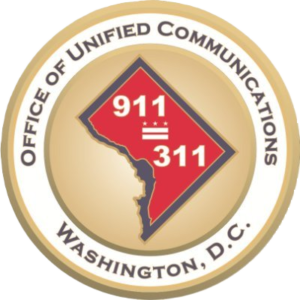IN-BUILDING PUBLIC SAFETY DAS COVERAGE & SOLUTIONS
In-Building Emergency Responder Radio Communication System (ERRCS)
Telnet will
Test, Design, Install, Certify and Monitor
your In-Building Emergency Responder Radio Communications System,
also known as In-Building Public Safety Solution.
LET’S MAKE YOUR ENVIRONMENT SAFER
In-Building Public Safety Communication Systems are needed because radio signals have limited propagation through various materials.
Today’s first responders not only rely on dependable voice communication, but increasingly also on data, telemetry, and location information. In an emergency situation where a matter of seconds can mean the difference between life and death, every tool at the first responder’s disposal must be absolutely reliable.
Office of Unified Communication
Telnet is one of only 4 DC OUC approved vendors

OUR SOLUTIONS
We will keep you in compliance with all the new fire codes to help you with your occupancy permits. In addition to safety, having reliable coverage is a solid investment which could improve property class ratings and reduce insurance costs. If you have an existing facility we will be able to assess your current coverage and provide you with an improvement plan. For buildings that are in planning phase, Telnet can provide a pre-construction plan to ensure first responder communications into the building architecture and regulatory compliance for your occupancy permit.
Additinal Services:
- Site Survey
- Grid Testing
- PS DAS Design
- AHJ / OUC Coordination
- Third-Party Testing
- Construction & Installation
- PS DAS Maintenance and Repair
PUBLIC SAFETY SURVEY REQUEST
In Certain States, we will do a FREE site survey; please click here to create a survey request.
CALL US at : 301-840-7110 ext 960
CODE COMPLIANCE and SAFER BUILDING COALITION
Fire codes for buildings are extensive and vary based on location, as they are determined by local, state, and federal regulations. There are also international codes that may be adopted by various jurisdictions. Here’s a general overview of the types of fire codes that buildings might need to comply with:
-
International Fire Code (IFC): Developed by the International Code Council (ICC), it provides regulations to safeguard life and property from fires and explosion hazards. It’s updated every three years.
510.1 Emergency responder radio coverage in new buildings. All new buildings shall have approved radio coverage for emergency responders within the building based upon the existing coverage levels of the public safety communication systems of the jurisdiction at the exterior of the building. This section shall not require the improvement of the existing public safety communication systems.
510.4.2.1 Amplification systems allowed. Buildings and structures which cannot support the required level of radio coverage shall be equipped with a radiating cable system, a distributed antenna system with Federal Communications Commission (FCC)-certified signal boosters, or other system approved by the fire code official in order to achieve the required adequate radio coverage.
-
National Fire Protection Association (NFPA) Codes: The NFPA publishes numerous codes and standards aimed at minimizing the risk and effects of fire. Key codes include:
- NFPA 1: Fire Code
- NFPA 101: Life Safety Code
- NFPA 70: National Electrical Code
- NFPA 72: National Fire Alarm and Signaling Code
- NFPA 1225:: Standard for Emergency Services Communications
- 18.8.1 Radio coverage shall be provided throughout the building as a percentage of floor area as specified in 18.8.3 and 18.8.4.
- 18.8.3 Critical areas, including fire command centers, fire pump rooms, exit stairs, exit passageways, elevators, elevator lobbies, standpipe cabinets, sprinkler sectional valve locations, and other areas deemed critical by the AHJ, shall be provided with 99 percent floor area radio coverage.
- 18.8.5 Buildings and structures that cannot support the required level of radio coverage shall be equipped with a system that includes RF-emitting devices that are certified by the radio licensing authority to achieve the required adequate radio coverage
-
Local Building Codes: Cities and states may have additional building codes that incorporate fire safety standards.
-
Fire Department Regulations: Local fire departments often have regulations regarding building inspection and maintenance of fire protection systems.
-
Occupational Safety and Health Administration (OSHA) Standards: For workplaces, OSHA has requirements that may affect fire safety, such as means of egress and fire protection.
-
Americans with Disabilities Act (ADA) Regulations: These can include requirements for fire alarms to have visual signals for the hearing impaired.
-
State-Specific Codes: Each state may have adopted its own set of fire codes, which could be based on the IFC or NFPA, or they might have developed independent codes.
-
Industry-Specific Codes: Certain industries, like healthcare or hospitality, have additional fire code requirements.
For detailed information and access to these resources, your readers can visit:
- NFPA’s free access codes and standards page: NFPA Free Access (NFPA).
- The ICC Digital Codes website where the International Fire Code (IFC) can be reviewed: ICC Digital Codes for IFC (ICCSafe).
- For additional resources and to learn about fire, electrical, and related hazards, the main NFPA website is a valuable resource: NFPA (NFPA).